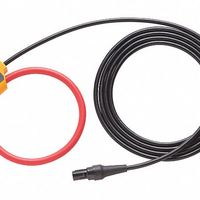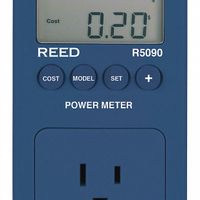Call +(254) 703 030 000 / 751 483 999 / 721 704 777
- Home
- Test Instruments
- Electrical Power Testing
- Power Quality Testers
.....Read More
Frequently Asked Questions
What is a power quality tester used for?
A power quality tester is a diagnostic tool used to assess and monitor the quality of electrical power in a system. It is essential for identifying and analyzing issues that can affect the performance and reliability of electrical equipment. These issues include voltage sags, swells, transients, harmonics, flicker, and interruptions. By detecting these anomalies, a power quality tester helps in preventing equipment malfunctions, reducing downtime, and improving energy efficiency.
Power quality testers are used in various applications, including industrial, commercial, and residential settings. They are crucial for facilities with sensitive electronic equipment, such as data centers, hospitals, and manufacturing plants, where power disturbances can lead to significant operational disruptions and financial losses.
The device measures parameters like voltage, current, frequency, and power factor, providing detailed insights into the electrical system's performance. Advanced models can also log data over time, allowing for trend analysis and predictive maintenance. This capability helps in identifying potential issues before they lead to equipment failure.
Additionally, power quality testers are used during the commissioning of new electrical installations to ensure compliance with standards and regulations. They are also employed in energy audits to identify inefficiencies and recommend corrective actions for optimizing power usage.
Overall, a power quality tester is a vital tool for maintaining the integrity and efficiency of electrical systems, ensuring that they operate within specified limits and deliver reliable power to connected devices.
How do power quality meters work?
Power quality meters are sophisticated devices designed to monitor and analyze the electrical parameters of power systems to ensure optimal performance and reliability. They work by continuously measuring various aspects of electrical power, such as voltage, current, frequency, power factor, harmonics, and transient disturbances.
These meters are typically installed at key points in the electrical distribution system, such as at the service entrance, on critical loads, or at distribution panels. They use sensors, such as current transformers (CTs) and potential transformers (PTs), to capture real-time data on electrical parameters. The captured analog signals are then converted into digital form using analog-to-digital converters (ADCs) for further processing.
Once digitized, the data is processed by the meter's internal microprocessor or digital signal processor (DSP). The processor analyzes the data to calculate various power quality metrics, including total harmonic distortion (THD), voltage sags and swells, flicker, and unbalance. Advanced meters can also detect and record transient events, such as voltage spikes or dips, which can be critical for diagnosing power quality issues.
The processed data is stored in the meter's memory and can be accessed locally via a display or remotely through communication interfaces like Ethernet, RS-485, or wireless connections. This allows for real-time monitoring and historical data analysis, enabling users to identify trends, diagnose issues, and implement corrective measures.
Power quality meters are essential for maintaining the efficiency and reliability of electrical systems, preventing equipment damage, reducing energy costs, and ensuring compliance with industry standards. They provide valuable insights into the health of the power system, helping facility managers and engineers make informed decisions to optimize power quality.
What are the benefits of using power quality analyzers?
Power quality analyzers offer several benefits that are crucial for maintaining efficient and reliable electrical systems:
1. **Improved System Reliability**: By identifying power quality issues such as voltage sags, swells, transients, and harmonics, these analyzers help prevent equipment malfunctions and failures, thereby enhancing system reliability.
2. **Energy Efficiency**: Power quality analyzers can detect inefficiencies in electrical systems, allowing for corrective actions that reduce energy waste and lower utility bills.
3. **Cost Savings**: By preventing equipment damage and reducing downtime, power quality analyzers help avoid costly repairs and replacements, leading to significant cost savings over time.
4. **Enhanced Equipment Performance**: By ensuring optimal power quality, these devices help maintain the performance and lifespan of electrical equipment, reducing the risk of premature wear and tear.
5. **Compliance and Standards**: Power quality analyzers assist in ensuring compliance with industry standards and regulations, which is essential for avoiding penalties and ensuring safe operation.
6. **Data-Driven Decisions**: They provide detailed data and insights into power quality issues, enabling informed decision-making for system improvements and investments.
7. **Predictive Maintenance**: By continuously monitoring power quality, these analyzers facilitate predictive maintenance strategies, allowing for proactive interventions before issues escalate.
8. **Minimized Downtime**: Quick detection and resolution of power quality issues help minimize system downtime, ensuring continuous operation and productivity.
9. **Improved Safety**: By identifying potential electrical hazards, power quality analyzers contribute to a safer working environment for personnel.
10. **Integration and Compatibility**: Modern power quality analyzers often integrate with other monitoring systems, providing a comprehensive view of the electrical network and enhancing overall system management.
How can power quality testers help in reducing energy waste?
Power quality testers are instrumental in identifying and mitigating issues that lead to energy waste. These devices measure various parameters such as voltage, current, frequency, and power factor, providing insights into the electrical system's performance. By detecting anomalies like voltage sags, swells, harmonics, and transients, power quality testers help pinpoint inefficiencies that can lead to energy waste.
One of the primary ways these testers reduce energy waste is by identifying poor power factor conditions. A low power factor indicates that more current is required to perform the same amount of work, leading to increased energy consumption and higher utility bills. By diagnosing and correcting power factor issues, businesses can reduce unnecessary energy usage and improve system efficiency.
Power quality testers also detect harmonic distortions, which can cause overheating in equipment and transformers, leading to energy losses. By identifying these distortions, corrective measures such as installing filters can be implemented to minimize energy waste and extend equipment lifespan.
Additionally, power quality testers help in uncovering unbalanced loads, which can cause excessive neutral currents and energy losses. By balancing loads, energy distribution becomes more efficient, reducing waste.
Furthermore, these testers can identify equipment operating outside optimal conditions, allowing for timely maintenance or replacement. This proactive approach prevents energy waste due to inefficient equipment operation.
In summary, power quality testers provide critical data that enables the identification and correction of inefficiencies in electrical systems. By addressing issues such as poor power factor, harmonic distortions, and unbalanced loads, these devices help reduce energy waste, lower operational costs, and enhance overall system reliability.
What are the common issues detected by power quality analyzers?
Power quality analyzers are essential tools for identifying and diagnosing issues in electrical systems. Common issues detected by these devices include:
1. **Voltage Sags and Swells**: Temporary drops (sags) or increases (swells) in voltage levels can disrupt sensitive equipment and lead to operational inefficiencies.
2. **Harmonics**: Distortions in the electrical waveform caused by non-linear loads can lead to overheating, equipment malfunctions, and reduced efficiency.
3. **Transients**: Sudden, short-duration spikes in voltage or current, often caused by lightning or switching operations, can damage equipment and reduce its lifespan.
4. **Flicker**: Rapid, repetitive changes in voltage can cause visible flickering of lights and affect the performance of sensitive equipment.
5. **Imbalance**: Unequal voltage or current in a three-phase system can lead to overheating and inefficiencies in motors and transformers.
6. **Frequency Variations**: Deviations from the standard frequency can affect the operation of motors and other frequency-sensitive devices.
7. **Power Factor Issues**: A low power factor indicates inefficient power usage, leading to higher energy costs and potential penalties from utility companies.
8. **Voltage Interruptions**: Complete loss of voltage for a short or extended period can halt operations and cause data loss or equipment damage.
9. **Overvoltage and Undervoltage**: Sustained periods of high or low voltage can stress electrical components, leading to premature failure.
10. **Noise**: Electromagnetic interference can affect the performance of sensitive electronic equipment.
By identifying these issues, power quality analyzers help in implementing corrective measures to improve system reliability, efficiency, and longevity.
How do you choose the right power quality tester for your needs?
To choose the right power quality tester, first identify your specific needs and objectives. Determine the types of power quality issues you need to monitor, such as voltage sags, swells, harmonics, or transients. Consider the environment where the tester will be used, whether it's industrial, commercial, or residential, as this affects the required durability and features.
Evaluate the technical specifications of the tester. Look for the measurement range, accuracy, and resolution to ensure it meets your requirements. Check if the tester can handle the voltage and current levels present in your system. Consider the number of channels needed for simultaneous measurements.
Assess the data storage and communication capabilities. Ensure the tester has sufficient memory for your data logging needs and offers connectivity options like USB, Ethernet, or wireless for easy data transfer and analysis.
Consider the ease of use and user interface. A tester with a clear display, intuitive controls, and comprehensive software can simplify operation and data interpretation. Training and support from the manufacturer can also be crucial for effective use.
Check for compliance with relevant standards, such as IEC 61000-4-30, to ensure reliable and standardized measurements. Look for additional features like remote monitoring, battery life, and portability if needed.
Finally, consider the budget and total cost of ownership, including initial purchase price, maintenance, and potential software updates. Compare different models and brands, read reviews, and possibly consult with experts or peers to make an informed decision.
What safety precautions should be taken when using power quality testers?
When using power quality testers, several safety precautions are essential to ensure both personal safety and the integrity of the equipment:
1. **Read the Manual**: Familiarize yourself with the user manual and safety instructions specific to the power quality tester model you are using.
2. **Personal Protective Equipment (PPE)**: Wear appropriate PPE, including insulated gloves, safety glasses, and flame-resistant clothing, to protect against electrical hazards.
3. **Inspect Equipment**: Before use, inspect the tester and all accessories for any signs of damage, such as frayed cables or cracked casings, which could compromise safety.
4. **Verify Calibration**: Ensure the tester is properly calibrated and functioning correctly to avoid inaccurate readings that could lead to unsafe conditions.
5. **De-energize Circuits**: Whenever possible, de-energize circuits before connecting the tester. If testing live circuits is necessary, use extreme caution and follow all safety protocols.
6. **Use Proper Test Leads**: Utilize test leads and probes that are rated for the voltage and current levels of the system being tested. Ensure they are in good condition and properly insulated.
7. **Observe Safe Distances**: Maintain a safe distance from live components and avoid contact with conductive parts to prevent electric shock.
8. **Grounding**: Ensure proper grounding of the tester to prevent electrical shock and ensure accurate measurements.
9. **Avoid Wet Conditions**: Do not use the tester in wet or damp conditions to prevent electrical shock and equipment damage.
10. **Follow Lockout/Tagout Procedures**: Adhere to lockout/tagout procedures to ensure circuits are not accidentally energized during testing.
11. **Be Aware of Surroundings**: Be mindful of your environment, including potential tripping hazards and other equipment that may pose additional risks.
12. **Training**: Ensure that all personnel using the tester are adequately trained in its operation and aware of the associated risks.
By adhering to these precautions, users can minimize risks and ensure safe operation when using power quality testers.


